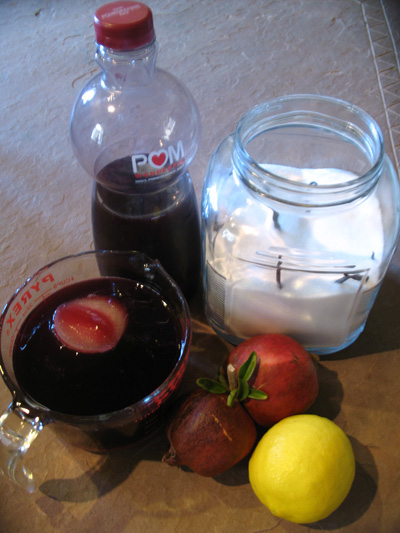mostarda di frutta and rack of lamb
Mostarda and Lamb’s main ingredients
Mostarda di Frutta is an Italian condiment made of candied fruit in a mustard-flavored syrup. It is served with boiled, roasted, or grilled meats, and is a fabulous accompaniment to cheeses.
The rack of lamb is “Frenched” which means the meat, fat, and membranes that connect the individual rib bones are scraped or trimmed away from the end of the bone down to about two inches above the rib-eye area. This is generally done on lamb chops, veal rib chops, or a crown pork roast. Frenched racks and chops can be purchased already done or you can “French” them on your own at home. Click this link for a great video demonstration from Fine Cooking on how to French a rack of lamb. If you do decide to French the lamb yourself, discard the fat and membrane, but be sure to save all meat scraps and use them as stew meat or grind to make into lamb burgers.
Wild rice is not true rice or a grain, but grass native to the Great Lakes region of North America. It is gluten-free and is a good source of potassium, phosphorus, thiamine, and riboflavin. Wild rice needs much more water and cooking time than white or brown rice; the water ratio is about 4 to 1. It takes about an hour to cook and not all the water is absorbed, the excess is drained away. Because of the long cooking time, I generally make a double batch and use half of it for another meal. Another common way to serve wild rice is to mix it with brown rice; this half-and-half combination makes it tasty and budget-friendly since wild rice is more expensive than other types of rice.

garlic, herbs, and salt before – and after mincing into a paste
There is a garlic-herb paste rubbed on the lamb and topping the tomatoes. A little bit of kosher salt is used in the mix, its purpose is to help break down the garlic, it makes a big difference in the texture of this paste and is always a great technique to use the next time you make aioli too.
[Read more →]
November 2, 2009 1 Comment
pomegranate molasses

This is one of my favorite recipes of all time. I have served it as an appetizer (using the leg of lamb cubes for little kebabs) and as a main course, as here with lamb chops, to literally hundreds of people and there has never been even one person who didn’t love it.
People who had given up on lamb saying that they found it too “gamey” ask for the recipe! The pomegranate juice truly transforms the lamb into the most delicious meat imaginable.
Pomegranate molasses can be found bottled in many Middle East markets, but it could not be easier to make yourself. You can see the 3 ingredients in the photo above.
A couple of items in the photo may look strange – allow me to explain. You ask, “What are those black sticks in your sugar jar?”
Answer: They are dried vanilla beans. You see, every time a recipe calls for a fresh vanilla bean, let’s say crème brûlée… once I’ve finished with the bean, I dry it off, and stick it in my sugar jar. The sugar takes on a hint of vanilla flavor, a bonus for just about any recipe calling for sugar.
Next question – “What is that stuff floating in the measuring cup holding the Pom juice?”
Answer: Frozen lemon juice. Living in Scottsdale, we have an abundance of citrus trees and in December – February, that citrus is coming out of our ears. My one and only lemon tree produced a plethora of lemons this year. I was zesting and juicing lemons daily for months plus giving away boxes upon boxes of citrus. It was a huge pain then, but of course, I am grateful and happy now with all the zip-locks bulging from my freezer.
To freeze the juice, I fill standard-size muffin tins to nearly the top (each muffin cup holds 1/4 cup of juice) and freeze the tins uncovered overnight. The next day, label a gallon-size zip-lock freezer bag with the date and “1/4 cup lemon juice each.” Then pop out the frozen “juice muffins” and immediately get them into the labeled zip-locks and back into the freezer. They will keep for about 1 year, just in time to start the process over again.
August 27, 2009 3 Comments




